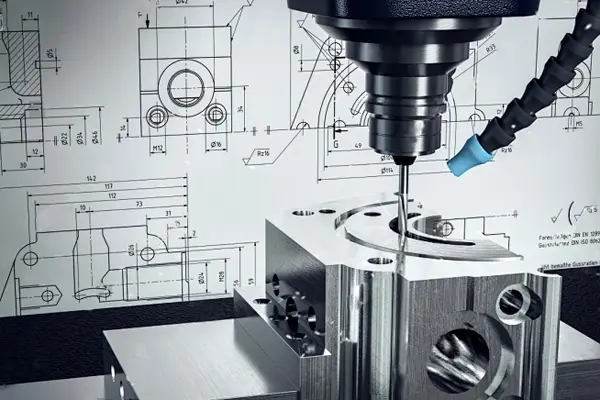CNC Machining Processes and Material Options
2025-09-04
In the world of precision manufacturing, CNC machining stands as a cornerstone technology, enabling the creation of complex, high-tolerance parts across countless industries. For engineers, product designers, and procurement specialists, selecting the right machining process and material is paramount to a project's success. This comprehensive guide, presented by KGL, a leader in advanced manufacturing solutions, will delve into the various CNC machining processes available and provide a detailed overview of material options. We will break down technical specifications using clear lists and tables, empowering you to make informed decisions for your next project.
Understanding Core CNC Machining Processes
CNC machining is a subtractive manufacturing process where pre-programmed computer software dictates the movement of factory tools and machinery. It can control a range of complex machinery, from grinders and lathes to mills and routers. At KGL, we utilize state-of-the-art multi-axis CNC machining centers to deliver unparalleled precision and complexity.
The three primary CNC machining processes are:
-
CNC Milling: This is one of the most common processes. A rotating cylindrical cutter moves along multiple axes to remove material from a stationary workpiece. It is ideal for creating flat surfaces, grooves, slots, gears, and complex 3D contours.
-
Key KGL Capabilities:
-
3-Axis Milling: Standard for top, side, and front-facing features.
-
5-Axis Milling: Allows for simultaneous movement along five axes, enabling the machining of highly complex geometries in a single setup. This drastically reduces lead times and improves accuracy.
-
High-Speed Machining (HSM): Employed for efficient material removal and superior surface finishes on both metals and plastics.
-
-
-
CNC Turning: This process is used to create cylindrical parts. The workpiece is rotated at high speed while a single-point cutting tool is fed into it, removing material to create diameter-specific features like grooves, tapers, and threads. This is performed on a lathe.
-
Key KGL Capabilities:
-
Swiss-Type Turning: Exceptional for producing small, intricate, and slender parts with extremely tight tolerances.
-
Multi-Axis Turning Centers: Combine turning with milling and drilling operations, allowing complete machining of a part in one machine.
-
-
-
CNC Drilling: While often integrated into milling and turning, dedicated drilling involves creating round holes in a workpiece using a rotating drill bit. KGL's equipment ensures hole placement is exact and consistent every time.
For many components, a combination of these processes is required to achieve the final part. Our engineers at KGL expertly program and sequence these operations for maximum efficiency and quality.
In-Depth Material Selection Guide for CNC Machining
The choice of material is equally critical as the machining process itself. It influences the part's functionality, weight, durability, cost, and environmental resistance. KGL offers an extensive inventory of raw materials, meticulously sourced and verified for quality.
Below is a detailed table comparing the most common metals and plastics used in CNC machining.
Table 1: CNC Machining Material Options & Parameters
| Material Category | Specific Material | Key Properties | Typical Applications | KGL Notes |
|---|---|---|---|---|
| Metals - Aluminum | 6061-T6 | Excellent strength-to-weight ratio, good machinability, corrosion resistance, good anodizing response. | Aerospace frames, automotive parts, consumer electronics, structural components. | Our most commonly machined metal; perfect for prototypes and production runs. |
| 7075-T6 | Very high strength, hardness; comparable to many steels. Good fatigue strength. | Aerospace components, high-performance automotive and bicycle parts. | Requires more powerful machining than 6061 but offers superior strength. | |
| Metals - Stainless Steel | 304 (SS304) | Excellent corrosion resistance, good formability and weldability. | Food processing equipment, chemical containers, architectural trim. | A versatile, all-purpose stainless steel. |
| 316 (SS316) | Superior corrosion resistance, especially to chlorides and acids. High temperature strength. | Marine applications, medical implants, pharmaceutical equipment. | The premium choice for harsh environments. | |
| Metals - Alloy Steel | 4140 | High strength, toughness, good wear resistance. Can be heat treated. | Gears, axles, bolts, fixtures, tooling. | A workhorse alloy for high-stress applications. |
| 4340 | Very high strength and toughness. Excellent fatigue resistance. | Aircraft landing gear, high-strength shafts, heavy-duty tooling. | Often used after heat treatment for maximum performance. | |
| Metals - Others | Brass C360 | Excellent machinability (free-machining), good corrosion resistance, decorative appeal. | Plumbing fittings, electrical components, musical instruments, decorative hardware. | Known for its smooth, clean finish and fast machining speeds. |
| Titanium (Ti-6Al-4V) | Exceptional strength-to-weight ratio, excellent corrosion resistance, biocompatible. | Aerospace engines, medical implants, high-performance automotive. | KGL has expertise in machining this challenging but valuable material. | |
| Plastics | ABS | Impact resistant, good mechanical properties, can be easily post-processed (e.g., painting, gluing). | Enclosures, prototypes, consumer products, automotive interior parts. | A popular and economical thermoplastic. |
| Polycarbonate (PC) | High impact strength, transparent, good heat resistance. | Safety glasses, bullet-proof glass, electronic displays, light fittings. | Noted for its incredible toughness. | |
| POM (Acetal/Delrin) | High stiffness, low friction, excellent dimensional stability. | Gears, bearings, rollers, lock components. | Ideal for precision parts that require low moisture absorption. | |
| Nylon (PA 6/66) | High strength, good wear resistance, good chemical resistance. | Gears, bushings, seals, structural components. | A durable engineering plastic with self-lubricating properties. | |
| PEEK | Exceptional chemical and heat resistance, high mechanical strength, biocompatible. | Aerospace, medical implants, semiconductor manufacturing. | A high-performance polymer for the most demanding applications. |
Why Partner with KGL for Your CNC Machining Needs?
Selecting a supplier goes beyond just process and material. It's about partnership, reliability, and precision. At KGL, our commitment is etched into every component we produce.
-
Advanced Technology: Our facilities are equipped with modern multi-axis CNC machining centers, allowing us to handle projects of any complexity from a simple bracket to a intricate aerospace component.
-
Stringent Quality Control: We operate a rigorous quality management system. Every part undergoes thorough inspection using coordinate measuring machines (CMMs) and other precision metrology tools to ensure it meets your exact specifications and the tightest tolerances (±0.001”/0.025mm standard).
-
Expert Engineering Support: Our team of experienced engineers and machinists is available to consult on your project. We can provide Design for Manufacturability (DFM) feedback to optimize your part for cost-effectiveness, performance, and manufacturability without compromising design intent.
-
Scalability and Speed: Whether you need a single prototype for functional testing or a full production run of thousands of parts, KGL has the capacity and logistical expertise to deliver on time, every time.
We have built our reputation on a foundation of quality, precision, and unwavering customer service. We understand that the parts we make are integral to your products' success, and we treat every order with the importance it deserves.
I invite you to experience the KGL difference firsthand. Let our expertise in CNC machining and material science bring your designs to life with unmatched precision and quality. Reach out to our team today with your specifications or questions at [email protected] for a swift and competitive quote. We look forward to partnering with you on your next project.



